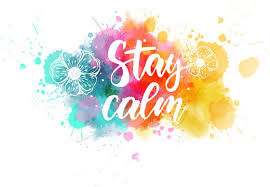How to Control Anger and Calm Yourself
A Comprehensive 2000-Word Guide for Emotional Balance and Inner Peace
Anger is a powerful emotion. It can drive us to take a stand against injustice or push us to defend what matters most. But when left unchecked, anger can consume our peace, ruin relationships, impair our decision-making, and lead to lasting regret. Learning how to control anger and calm yourself is one of the most important emotional skills you can develop—for your well-being, relationships, and success in life.
In this comprehensive article, we’ll explore the science behind anger, understand why it arises, identify warning signs, and dive into proven techniques to manage, express, and calm anger in healthy ways.
I. Understanding Anger
What is Anger?
Anger is a natural emotional response to perceived threats, mistreatment, frustration, or injustice. It triggers the body's fight-or-flight response, increasing adrenaline, heart rate, and muscle tension. While it can be constructive when it fuels positive action, anger becomes destructive when it controls you rather than the other way around.
Anger isn’t the enemy—poorly managed anger is.
Types of Anger
Understanding the different forms of anger helps in addressing it effectively:
-
Passive Aggression – Indirect expression of anger, such as sarcasm or withdrawal.
-
Open Aggression – Outwardly expressed anger through yelling, blaming, or violence.
-
Assertive Anger – Controlled, respectful communication of feelings without harm.
II. Causes and Triggers of Anger
Anger is rarely caused by just one event. It’s often the result of multiple layers of stress, unresolved emotions, and external triggers.
Common Causes Include:
-
Feeling disrespected or misunderstood
-
Injustice or unfair treatment
-
Stress, anxiety, or fear
-
Exhaustion or burnout
-
Past trauma or unresolved emotional pain
-
Lack of control over a situation
Everyday Triggers Might Be:
-
Traffic jams
-
Interruptions during work
-
Financial pressures
-
Family disagreements
-
Social media arguments
-
Feeling ignored or criticized
Once you become aware of your triggers, you’re better equipped to intervene before anger takes over.
III. Recognizing the Signs of Anger Early
Before anger escalates into an outburst, the body and mind give off warning signals. Recognizing them early is crucial to staying in control.
Physical Signs:
-
Rapid heartbeat
-
Clenched jaw or fists
-
Sweating
-
Tension in the neck or shoulders
-
Shaking or trembling
Emotional Signs:
-
Irritability
-
Feeling overwhelmed
-
Resentment
-
Sarcastic thoughts
-
Urge to yell or break things
The earlier you identify these signals, the easier it is to take calming action.
IV. Techniques to Control Anger
1. Pause and Breathe
One of the most effective ways to interrupt anger is through controlled breathing. When you’re angry, your breathing becomes shallow and fast. Reversing this pattern helps calm the nervous system.
Try this: The 4-7-8 Method
-
Inhale through your nose for 4 seconds
-
Hold your breath for 7 seconds
-
Exhale slowly for 8 seconds
-
Repeat for 3–4 cycles
2. Count to Ten (Or Backward from 100)
This classic method isn’t just for kids. Counting helps you create distance from the trigger and allows your logical brain to regain control from your emotional brain.
3. Take a Timeout
Physically remove yourself from the situation if you can. Whether it’s stepping out of a meeting, leaving the room, or going for a short walk, this break lets your body de-escalate and helps you think clearly.
4. Practice Grounding Techniques
Grounding brings your awareness back to the present moment, helping you escape the spiral of angry thoughts.
Try the 5-4-3-2-1 Technique:
-
5 things you can see
-
4 things you can touch
-
3 things you can hear
-
2 things you can smell
-
1 thing you can taste
5. Use “I” Statements
Instead of blaming others, express your feelings using “I” statements. This encourages communication without escalating the conflict.
For example:
Instead of saying, “You never listen to me!”
Say: “I feel hurt when I’m interrupted because I want to feel heard.”
6. Reframe Your Thoughts
Angry thoughts are often exaggerated and biased. Challenge them.
Instead of:
“This always happens to me.”
Try:
“This is frustrating, but I can handle it.”
Replacing extreme words like never, always, or hate with more neutral language reduces emotional intensity.
V. Calming Activities That Prevent Anger from Building
Consistently calming your nervous system helps reduce overall irritability and emotional reactivity.
1. Exercise Regularly
Physical activity helps release tension, boosts endorphins, and improves mood. Aim for at least 30 minutes of moderate exercise 5 times a week—walking, swimming, dancing, or boxing are excellent choices.
2. Practice Mindfulness and Meditation
Mindfulness teaches you to observe your emotions without reacting to them. Just 10 minutes a day can significantly reduce anger and anxiety.
3. Engage in Creative Expression
Drawing, journaling, singing, or playing an instrument gives your emotions an outlet.
Journaling Prompt:
What triggered your anger today? How did you react? What could you do differently next time?
4. Sleep and Nutrition
A tired, hungry, or malnourished brain is more reactive. Get 7–9 hours of sleep, stay hydrated, and eat balanced meals to regulate mood.
VI. Long-Term Anger Management Strategies
While quick fixes are useful, lasting control over anger comes from addressing the deeper emotional and behavioral patterns that feed it.
1. Identify Root Emotions
Anger is often a secondary emotion that masks deeper feelings such as:
-
Hurt
-
Rejection
-
Guilt
-
Embarrassment
-
Fear
Explore what's underneath the anger to truly resolve it.
2. Build Emotional Intelligence (EQ)
EQ involves self-awareness, self-regulation, motivation, empathy, and social skills. High EQ individuals are better at managing anger, resolving conflicts, and building strong relationships.
3. Develop Problem-Solving Skills
Sometimes anger stems from helplessness. The more solutions you can find to your problems, the less likely you’ll feel overwhelmed or out of control.
4. Set Healthy Boundaries
People often become angry when their boundaries are violated. Learn to say no, stand up for your needs, and avoid situations that consistently upset you.
5. Seek Professional Help
If your anger feels out of control, causes violence, or hurts your relationships, a therapist or counselor can help. Anger management therapy is highly effective and offers tools tailored to your personal experiences.
VII. What to Do After an Outburst
Even with the best intentions, we all slip up. What matters is how you repair and learn from those moments.
Steps to Take:
-
Take responsibility. “I lost my temper. That was wrong.”
-
Apologize sincerely. No excuses, just honesty.
-
Reflect and journal. What was the trigger? What can you do differently next time?
-
Make amends if needed. Show through actions that you are working to improve.
VIII. Real-Life Examples
Scenario 1: Workplace Conflict
Trigger: Your colleague takes credit for your work.
Old Reaction: Yelling or bottling up resentment.
New Response: Take a deep breath, write down your thoughts, and have a calm conversation using “I” statements:
“I felt unacknowledged during the meeting. I’d appreciate our discussing contributions openly next time.”
Scenario 2: Parenting Stress
Trigger: Your child spills something again after being warned.
Old Reaction: Shouting or punishment.
New Response: Step away for a moment, take a few breaths, return calmly:
“Mistakes happen, but we need to work on listening the first time. Let’s clean this up together.”
IX. 10 Quick Ways to Calm Yourself Immediately
-
Breathe deeply for 60 seconds
-
Splash cold water on your face
-
Step outside and get fresh air
-
Listen to calming music
-
Squeeze a stress ball
-
Repeat a calming mantra (“I am calm. I am in control.”)
-
Visualize a peaceful place
-
Write your thoughts down
-
Do 20 jumping jacks
-
Drink a glass of cold water slowly
X. Final Thoughts: You’re Stronger Than Your Anger
Anger doesn’t have to control your life. With self-awareness, emotional tools, and regular practice, you can transform your anger into strength, clarity, and growth.
Remember:
-
You are not your anger.
-
You can pause and choose your response.
-
Peace is a skill—and it’s worth mastering.
Learning to control your anger is a journey, not a destination. Start with small steps today, and you’ll build a calmer, wiser, and more resilient version of yourself—one choice at a time.




.jpeg)
.jpeg)



.jpeg)
.jpeg)
.jpg)

.jpeg)
0 Comments